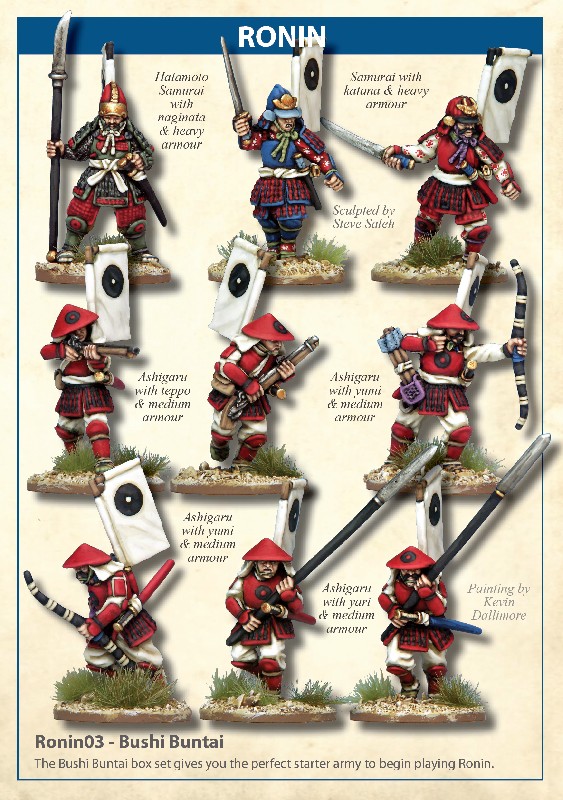
For my 28mm samurai skirmish project, I’ve finally settled on Kingsford Miniatures. I did try some other manufacturers first, but in the end Kingsford’s figures were the ones I fell for.
Kingsford Miniatures are very nice indeed, as you’ll see by clicking on the above picture to see them in more detail. (If you look carefully, you’ll also see a Kensei geisha in there).
The Kingsford figures are on the slightly larger end of 28mm, which is something I like. They are nicely sculpted – for example, the lacing in the armour is crisp and clear. The faces are characterful and very Japanese in looks. The animation of the figures is nice without being overdone.
The fact that these exquisite figures are sculpted by acknowledged samurai expert ‘Evalario’, and so will no doubt be entirely accurate, makes them even more appealing.
So far, all I’ve done is to glue them to heavy iron washers, which make perfect single figure bases. I used slightly larger washers for the horses and also for the bannermen (who would otherwise topple over with their large heavy metal banners).
Weapons and banners are cast separately, and so have to be glued in the figures’ hands. I haven’t actually glued any of these onto the figures as yet.
But any further progress on these figures is going to be delayed for a couple of months. This is because I’m heading off at the end of next week to visit the far side of the world – England, Scotland, France and the Netherlands!!!
Whilst it is a family trip, I do hope to squeeze in some wargaming and modelling visits: the National Army Museum in London, Pendon Model Railway in Oxfordshire; Culloden battlefield in Scotland, and Les Invalides in Paris.
I may even be able to make it to my first ever UK wargames show, SELWG. However, as this occurs on my last weekend in England, my family may have other ideas. So I’ll just have to wait and see if I can score the day away…














































